Tung Nguyen
Michael Pokorny
Humanity's Last Exam
Jan 24, 2025Abstract:Benchmarks are important tools for tracking the rapid advancements in large language model (LLM) capabilities. However, benchmarks are not keeping pace in difficulty: LLMs now achieve over 90\% accuracy on popular benchmarks like MMLU, limiting informed measurement of state-of-the-art LLM capabilities. In response, we introduce Humanity's Last Exam (HLE), a multi-modal benchmark at the frontier of human knowledge, designed to be the final closed-ended academic benchmark of its kind with broad subject coverage. HLE consists of 3,000 questions across dozens of subjects, including mathematics, humanities, and the natural sciences. HLE is developed globally by subject-matter experts and consists of multiple-choice and short-answer questions suitable for automated grading. Each question has a known solution that is unambiguous and easily verifiable, but cannot be quickly answered via internet retrieval. State-of-the-art LLMs demonstrate low accuracy and calibration on HLE, highlighting a significant gap between current LLM capabilities and the expert human frontier on closed-ended academic questions. To inform research and policymaking upon a clear understanding of model capabilities, we publicly release HLE at https://lastexam.ai.
MedMax: Mixed-Modal Instruction Tuning for Training Biomedical Assistants
Dec 17, 2024Abstract:Recent advancements in mixed-modal generative models have enabled flexible integration of information across image-text content. These models have opened new avenues for developing unified biomedical assistants capable of analyzing biomedical images, answering complex questions about them, and predicting the impact of medical procedures on a patient's health. However, existing resources face challenges such as limited data availability, narrow domain coverage, and restricted sources (e.g., medical papers). To address these gaps, we present MedMax, the first large-scale multimodal biomedical instruction-tuning dataset for mixed-modal foundation models. With 1.47 million instances, MedMax encompasses a diverse range of tasks, including multimodal content generation (interleaved image-text data), biomedical image captioning and generation, visual chatting, and report understanding. These tasks span diverse medical domains such as radiology and histopathology. Subsequently, we fine-tune a mixed-modal foundation model on the MedMax dataset, achieving significant performance improvements: a 26% gain over the Chameleon model and an 18.3% improvement over GPT-4o across 12 downstream biomedical visual question-answering tasks. Additionally, we introduce a unified evaluation suite for biomedical tasks, providing a robust framework to guide the development of next-generation mixed-modal biomedical AI assistants.
GloCOM: A Short Text Neural Topic Model via Global Clustering Context
Nov 30, 2024
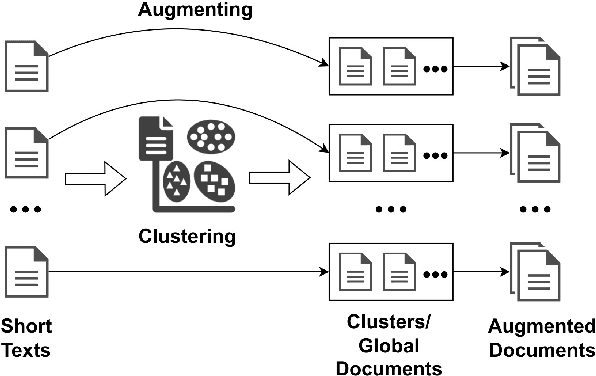
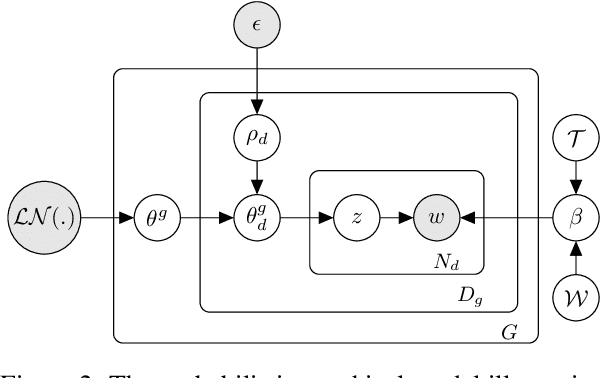
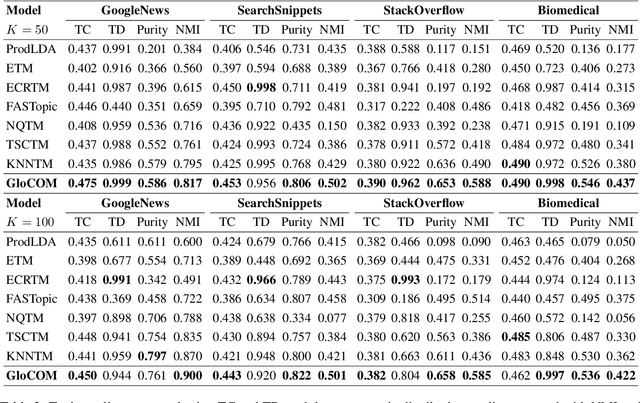
Abstract:Uncovering hidden topics from short texts is challenging for traditional and neural models due to data sparsity, which limits word co-occurrence patterns, and label sparsity, stemming from incomplete reconstruction targets. Although data aggregation offers a potential solution, existing neural topic models often overlook it due to time complexity, poor aggregation quality, and difficulty in inferring topic proportions for individual documents. In this paper, we propose a novel model, GloCOM (Global Clustering COntexts for Topic Models), which addresses these challenges by constructing aggregated global clustering contexts for short documents, leveraging text embeddings from pre-trained language models. GloCOM can infer both global topic distributions for clustering contexts and local distributions for individual short texts. Additionally, the model incorporates these global contexts to augment the reconstruction loss, effectively handling the label sparsity issue. Extensive experiments on short text datasets show that our approach outperforms other state-of-the-art models in both topic quality and document representations.
Predicting from Strings: Language Model Embeddings for Bayesian Optimization
Oct 15, 2024


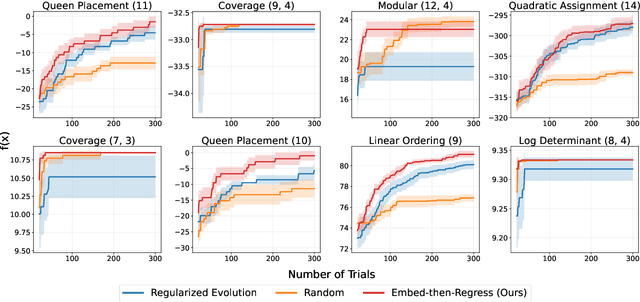
Abstract:Bayesian Optimization is ubiquitous in the field of experimental design and blackbox optimization for improving search efficiency, but has been traditionally restricted to regression models which are only applicable to fixed search spaces and tabular input features. We propose Embed-then-Regress, a paradigm for applying in-context regression over string inputs, through the use of string embedding capabilities of pretrained language models. By expressing all inputs as strings, we are able to perform general-purpose regression for Bayesian Optimization over various domains including synthetic, combinatorial, and hyperparameter optimization, obtaining comparable results to state-of-the-art Gaussian Process-based algorithms. Code can be found at https://github.com/google-research/optformer/tree/main/optformer/embed_then_regress.
NeuroMax: Enhancing Neural Topic Modeling via Maximizing Mutual Information and Group Topic Regularization
Sep 29, 2024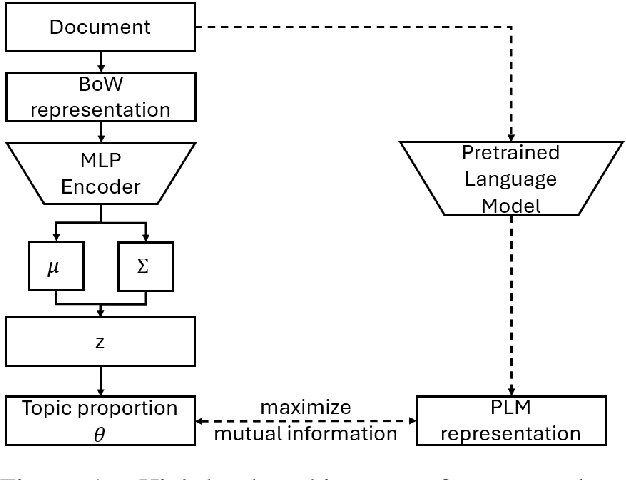
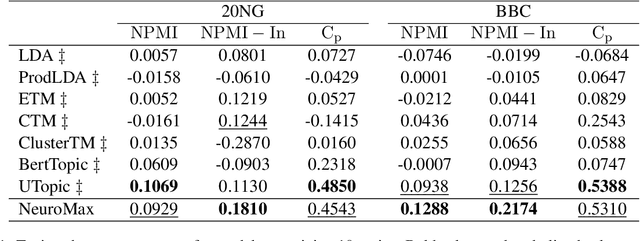
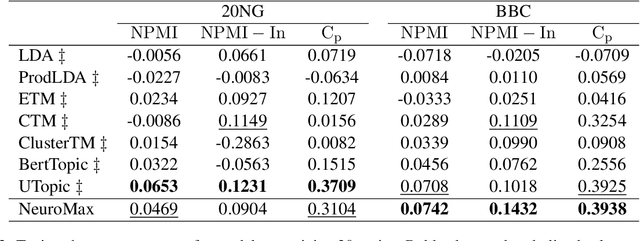
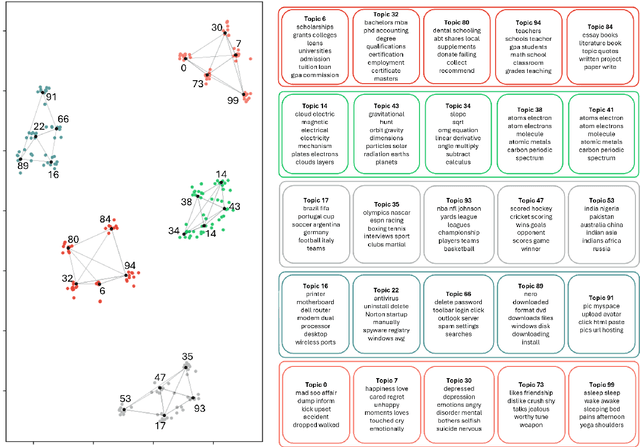
Abstract:Recent advances in neural topic models have concentrated on two primary directions: the integration of the inference network (encoder) with a pre-trained language model (PLM) and the modeling of the relationship between words and topics in the generative model (decoder). However, the use of large PLMs significantly increases inference costs, making them less practical for situations requiring low inference times. Furthermore, it is crucial to simultaneously model the relationships between topics and words as well as the interrelationships among topics themselves. In this work, we propose a novel framework called NeuroMax (Neural Topic Model with Maximizing Mutual Information with Pretrained Language Model and Group Topic Regularization) to address these challenges. NeuroMax maximizes the mutual information between the topic representation obtained from the encoder in neural topic models and the representation derived from the PLM. Additionally, NeuroMax employs optimal transport to learn the relationships between topics by analyzing how information is transported among them. Experimental results indicate that NeuroMax reduces inference time, generates more coherent topics and topic groups, and produces more representative document embeddings, thereby enhancing performance on downstream tasks.
ClimDetect: A Benchmark Dataset for Climate Change Detection and Attribution
Aug 28, 2024
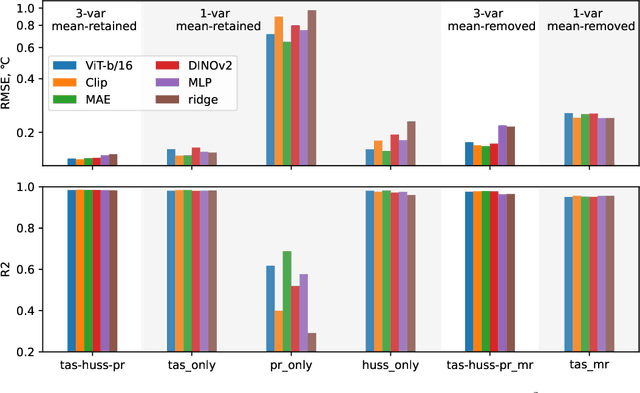
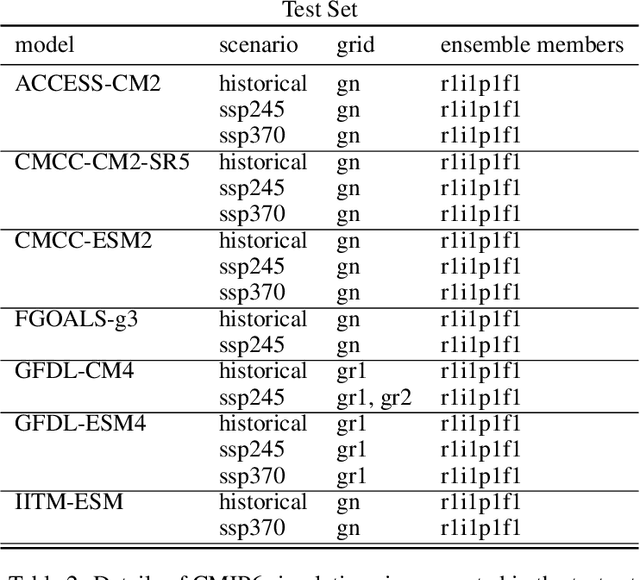
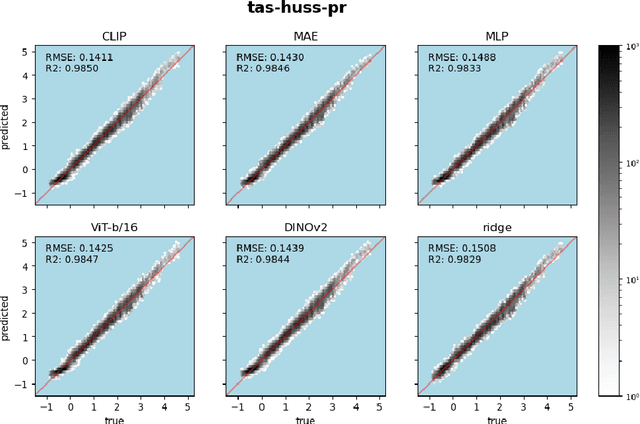
Abstract:Detecting and attributing temperature increases due to climate change is crucial for understanding global warming and guiding adaptation strategies. The complexity of distinguishing human-induced climate signals from natural variability has challenged traditional detection and attribution (D&A) approaches, which seek to identify specific "fingerprints" in climate response variables. Deep learning offers potential for discerning these complex patterns in expansive spatial datasets. However, lack of standard protocols has hindered consistent comparisons across studies. We introduce ClimDetect, a standardized dataset of over 816k daily climate snapshots, designed to enhance model accuracy in identifying climate change signals. ClimDetect integrates various input and target variables used in past research, ensuring comparability and consistency. We also explore the application of vision transformers (ViT) to climate data, a novel and modernizing approach in this context. Our open-access data and code serve as a benchmark for advancing climate science through improved model evaluations. ClimDetect is publicly accessible via Huggingface dataet respository at: https://huggingface.co/datasets/ClimDetect/ClimDetect.
LICO: Large Language Models for In-Context Molecular Optimization
Jun 27, 2024Abstract:Optimizing black-box functions is a fundamental problem in science and engineering. To solve this problem, many approaches learn a surrogate function that estimates the underlying objective from limited historical evaluations. Large Language Models (LLMs), with their strong pattern-matching capabilities via pretraining on vast amounts of data, stand out as a potential candidate for surrogate modeling. However, directly prompting a pretrained language model to produce predictions is not feasible in many scientific domains due to the scarcity of domain-specific data in the pretraining corpora and the challenges of articulating complex problems in natural language. In this work, we introduce LICO, a general-purpose model that extends arbitrary base LLMs for black-box optimization, with a particular application to the molecular domain. To achieve this, we equip the language model with a separate embedding layer and prediction layer, and train the model to perform in-context predictions on a diverse set of functions defined over the domain. Once trained, LICO can generalize to unseen molecule properties simply via in-context prompting. LICO achieves state-of-the-art performance on PMO, a challenging molecular optimization benchmark comprising over 20 objective functions.
Probing the Decision Boundaries of In-context Learning in Large Language Models
Jun 17, 2024Abstract:In-context learning is a key paradigm in large language models (LLMs) that enables them to generalize to new tasks and domains by simply prompting these models with a few exemplars without explicit parameter updates. Many attempts have been made to understand in-context learning in LLMs as a function of model scale, pretraining data, and other factors. In this work, we propose a new mechanism to probe and understand in-context learning from the lens of decision boundaries for in-context binary classification. Decision boundaries are straightforward to visualize and provide important information about the qualitative behavior of the inductive biases of standard classifiers. To our surprise, we find that the decision boundaries learned by current LLMs in simple binary classification tasks are often irregular and non-smooth, regardless of linear separability in the underlying task. This paper investigates the factors influencing these decision boundaries and explores methods to enhance their generalizability. We assess various approaches, including training-free and fine-tuning methods for LLMs, the impact of model architecture, and the effectiveness of active prompting techniques for smoothing decision boundaries in a data-efficient manner. Our findings provide a deeper understanding of in-context learning dynamics and offer practical improvements for enhancing robustness and generalizability of in-context learning.
Rank-Preference Consistency as the Appropriate Metric for Recommender Systems
Apr 26, 2024Abstract:In this paper we argue that conventional unitary-invariant measures of recommender system (RS) performance based on measuring differences between predicted ratings and actual user ratings fail to assess fundamental RS properties. More specifically, posing the optimization problem as one of predicting exact user ratings provides only an indirect suboptimal approximation for what RS applications typically need, which is an ability to accurately predict user preferences. We argue that scalar measures such as RMSE and MAE with respect to differences between actual and predicted ratings are only proxies for measuring RS ability to accurately estimate user preferences. We propose what we consider to be a measure that is more fundamentally appropriate for assessing RS performance, rank-preference consistency, which simply counts the number of prediction pairs that are inconsistent with the user's expressed product preferences. For example, if an RS predicts the user will prefer product A over product B, but the user's withheld ratings indicate s/he prefers product B over A, then rank-preference consistency has been violated. Our test results conclusively demonstrate that methods tailored to optimize arbitrary measures such as RMSE are not generally effective at accurately predicting user preferences. Thus, we conclude that conventional methods used for assessing RS performance are arbitrary and misleading.
ChaosBench: A Multi-Channel, Physics-Based Benchmark for Subseasonal-to-Seasonal Climate Prediction
Feb 01, 2024
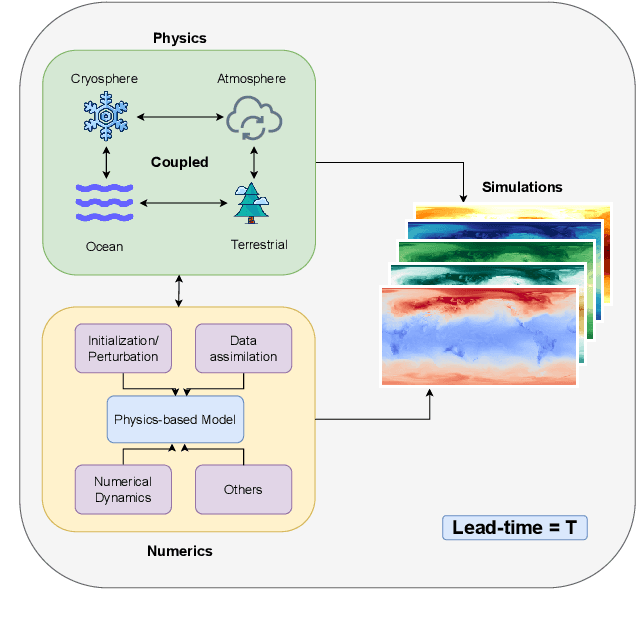

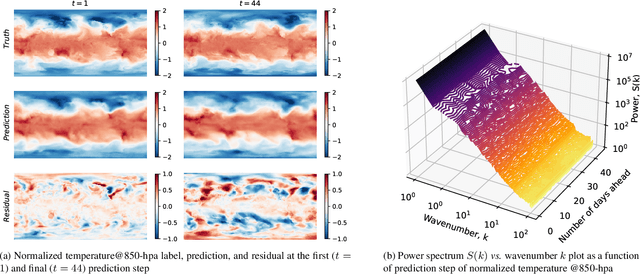
Abstract:Accurate prediction of climate in the subseasonal-to-seasonal scale is crucial for disaster readiness, reduced economic risk, and improved policy-making amidst climate change. Yet, S2S prediction remains challenging due to the chaotic nature of the system. At present, existing benchmarks for weather and climate applications, tend to (1) have shorter forecasting range of up-to 14 days, (2) do not include a wide range of operational baseline forecasts, and (3) lack physics-based constraints for explainability. Thus, we propose ChaosBench, a large-scale, multi-channel, physics-based benchmark for S2S prediction. ChaosBench has over 460K frames of real-world observations and simulations, each with 60 variable-channels and spanning for up-to 45 years. We also propose several physics-based, in addition to vision-based metrics, that enables for a more physically-consistent model. Furthermore, we include a diverse set of physics-based forecasts from 4 national weather agencies as baselines to our data-driven counterpart. We establish two tasks that vary in complexity: full and sparse dynamics prediction. Our benchmark is one of the first to perform large-scale evaluation on existing models including PanguWeather, FourCastNetV2, GraphCast, and ClimaX, and finds methods originally developed for weather-scale applications fails on S2S task. We release our benchmark code and datasets at https://leap-stc.github.io/ChaosBench.
 Add to Chrome
Add to Chrome Add to Firefox
Add to Firefox Add to Edge
Add to Edge